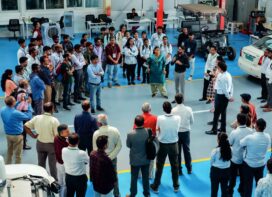Comparison of Old and Latest NHAI ATMS Policy
To understand better, I tried comparison between the old and latest NHAI ATMS policies unveiling a few notable shifts and improvements:
Technology Focus: The old policy primarily centered around basic traffic monitoring and data collection. In contrast, the latest policy underscores the importance of upgrading infrastructure and integrating advanced technologies like 5G, reflecting a paradigm shift in technological focus.
Road Safety Measures: While the old policy had a limited focus on incident response and prevention, the latest policy prioritizes real-time monitoring, incident detection, and dynamic traffic management. This signifies a crucial shift toward a proactive approach to ensuring road safety.
Traffic Law Enforcement: The transition from manual patrolling and limited camera systems in the old policy to a focus on digital enforcement through automated systems and camera integration in the latest policy represents a significant evolution in traffic law enforcement.
Future Adaptability: The old policy exhibited limited flexibility for future technology integration. Conversely, the latest policy embraces openness to incorporating newer technologies like 5G, indicating a commitment to future advancements and adaptability.
Collaboration Focus: The collaborative aspect of the policies has undergone a notable transformation. While the old policy was primarily NHAI-driven, the latest policy actively encourages collaboration between NHAI, technology providers, and research institutions, reflecting a more inclusive and synergistic approach.
Points for Potential Improvement
While applauding the positive strides made in the latest NHAI ATMS policy, it is crucial to address areas for potential improvement:
Data Privacy and Security: Strengthening protocols for the collection, storage, and utilization of traffic data is imperative. The implementation of robust data privacy and security measures, akin to those adopted in countries like Germany, ensures the ethical handling of sensitive information.
Cost-Effectiveness Implementation: While technological advancements are crucial, ensuring cost-effective deployment and maintenance is equally vital. Learning from the experiences of cities like Barcelona, where cost-effective smart city solutions have been implemented, can offer insights into achieving a balance between technological innovation and financial sustainability.
Training and Capacity Building: Comprehensive training programs for NHAI personnel and stakeholders should be prioritized to build technical expertise. The establishment of training academies, as seen in Singapore for smart city professionals, can serve as a model for capacity building within the ITS ecosystem.
Public Awareness and Transparency: Increasing public awareness about the benefits and functionalities of the upgraded ATMS is essential for garnering public acceptance. Transparency measures, such as those employed in New York’s Vision Zero initiative, can enhance public trust and understanding.
Inclusiveness and Accessibility: Considering the needs of diverse user groups, including pedestrians, cyclists, and differently-abled individuals, is imperative. The implementation of inclusive transportation solutions in cities like Copenhagen, where cycling infrastructure is seamlessly integrated, provides a blueprint for ensuring equal access to the transportation system.
Though the latest NHAI ATMS policy marks a commendable shift towards modernization, safety enhancement and technology integration, the challenges persists and addressing these challenges is crucial to ensuring the sustainable implementation, public acceptance, and long-term benefits of the upgraded ATMS systems. The continuous evaluation of the policy’s impact on traffic flow, congestion, emissions, economic productivity, and environmental considerations is paramount.
As we navigate the path toward a smarter, safer, and more sustainable transportation ecosystem, the latest NHAI ATMS policy sets the stage for a transformative journey. Its success will lie not only in the implementation of its technological advancements but also in the collaborative, transparent, and inclusive approach envisioned for the future of intelligent transportation in India. The coming years will reveal the true efficacy of these policies as we witness the tangible impact on the ground and the realization of a visionary and integrated transportation system.
 TrafficInfraTech Magazine Linking People Places & Progress
TrafficInfraTech Magazine Linking People Places & Progress




